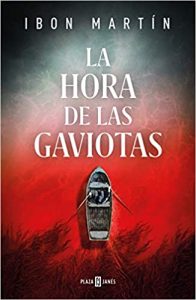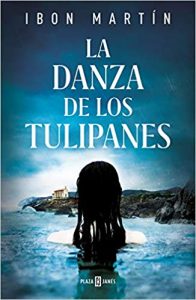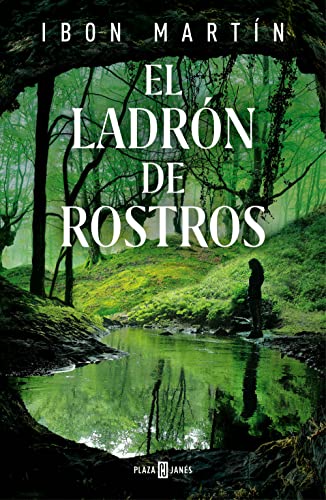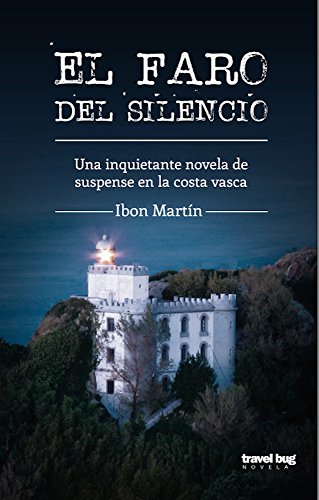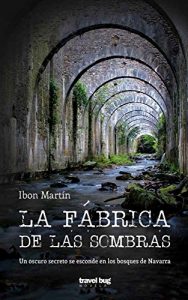When I read an author with whom I share common scenarios by generation issue, and especially in terms of cultural and thematic references, the reading reaches another level. From the general tuning, more intense aromas extend to the reading from the lees of an imaginary crossed in that melting pot of the coinciding time.
It happens to me with Michael Santiago or with Paul pen. To cite two notorious current authors of our Iberian narrative panorama. And something similar also happens with a Ibon Martin that, in his novelist side, is determined to convert green meadows surrounded by forests or coasts of the Basque Country facing the spirited Cantabrian Sea, into disturbing spaces delivered to dark plots.
Suspenseful crime novels, loaded with great tension, even some esoteric touches when appropriate. A great author who already composes an extremely interesting bibliography.
Top 3 recommended novels by Ibón Martín
The hour of the seagulls
They will have their one for whom they like. But the truth is that the seagulls, with their out-of-tune squawks and their stalking flights, like small sea vultures, have never entered my right eye. It will be that I am from dry land ...
Perhaps the idea is that, to evoke a bit the unsettling of some Hitchcock birds to convey an unsettling sense of uncertain threat, fear and suspense in a police plot woven with surgical precision.
We are fortunate to enjoy a great host of suspense writers who alternate their stories to fill our nightstands with new and great novels. Could be from Dolores Redondo but also Victor of the Tree and of course a Ibon Martin already settled in that narrative maturity that also arrives with the forty-something.
A consolidation achieved after forging between disparate genres to find a hybrid between his taste for landscapes and introspection that can be born from the observation of a capricious and dark Cantabrian Sea, capable of unraveling deep stories of abyssal bottoms not only oceanic but human.
Because in today's suspense or thriller, readers are always looking for more, yearning for evil motives, for reasons so that the vision of the world is obscured from minds capable of animosity as a vital foundation.
The telluric once again acquires that prominence that permeates everything, from the cold coastal aroma that freezes the blood to the saltpeter that saturates the air currents until they crack like pinches on our skin.
Seagulls fly restlessly over the seafaring city of Hondarribia, which has dressed in its best clothes to celebrate a special day. Their squawks compete with the happy sounds that flood the streets, where neighbors prepare to enjoy the party oblivious to the terrible threat that looms over them.
In the middle of the parade, horror breaks out. A savage and accurate stab waters the cold stone floor with blood. A woman has been murdered. And it will not be the last one. NCO Ane Cestero and her special unit will have to hunt down a ferocious and implacable assassin, capable of hiding from the sight of an entire town.
The hour of the seagulls is a thriller sinuous, magnetic and impeccable that confronts us with the worst of enemies: the visceral hatred that beats hidden in all of us.
The dance of the tulips
In the outstanding virtue of combining tension and depth in the same plot, Ibón Martín points to Victor of the Tree, both capable of painting their characters with traits that capture from their psychological depth. Because it is good to consider a thriller with enough substance like the one presented in this novel.
But if in addition to the case in question of the criminal on duty, committed to the posterity of a recurring work that everyone talks about and that manages to stop time in the fascinating space of the Urdaibai estuary, this irruption of characters as greats is also achieved. replicas that shake everything by the deep tribulations made descriptions with existentialist overtones, one ends up enjoying a story with a great flow in any of its aspects.
The passage from one chapter to another supposes that constant desire to return to some of the varied scenarios by which everything revolves around crime, evil, that feeling that the profoundly beautiful can become abominable. And in those, in that capacity to transform polarized ideas, this story beats us completely, at every moment, with a telluric force where the best and the worst of the human soul are stripped away.
the face stealer
As the third installment of the Ane Cestero series, and after "The Tulip Dance" and "The Seagull Hour", comes this closing of the trilogy, which will surely aim at higher levels given the exceptional reception of the readers.
For the illustrious occasion of the aforementioned trilogy, Ibón takes us to a magical space since ancestrally pagan rites were performed, of Celtic tradition, finally won for the cause of Christianity with the construction of the hermitage that testifies to it.
But the magic remains. And like everything profane that finally ends up approaching the darkest, the drift of the ancient tradition takes on black, sinister overtones on this occasion. From the Sandaili cave, open over the Jaturabe ravine, remote voices demand new blood, life and death.
In the humble hermitage carved into the rock, the mutilated body of a woman murdered while practicing an ancient fertility rite has appeared. Her torso has been opened and emptied and her hands have been placed on either side of her abdomen in an attitude of delivery. The scene reproduces, with macabre accuracy, the figures of the apostles that Oteiza sculpted on the façade of the Arantzazu basilica. The evidence indicates that someone made a copy of her face at the time of her death.
A dangerous ritual murderer has been born in the shelter of the green mountains that have kept the myths and legends of the Basques since time immemorial. An isolated enclave, shaped by water that has left its scars in the form of majestic gorges and deep caves. Ane Cestero and the Impact Homicide Unit will embark on a journey to the bowels of the earth where the darkest part of the human soul is hidden.
Other recommended books by Ibón Martín…
The beacon of silence
With this novel began the saga that precipitated the author to that recognition of the thriving author of a black genre always eager for new feathers. The author's passion for this scenery captured by the traveler after an intense day on the road reaches a special dimension in this story.
Because Ibon achieves that the already imposing image of a solitary lighthouse exposed to the sea, as a symbol of the human that tries to control an impossible ocean, acquires that tinge of fear of loneliness, of the looming proximity of madness or of shades.
Among those shadows we find a Leire who unfortunately faces maddening interrogations when she reports the corpse of the woman at the foot of the lighthouse.
Time advances against her if she wants to show that she has nothing to do with that corpse on whose forensic investigation details are revealed that link with the old myth of the buttermilk in whose supposed criminal performance, lost in the night of time and legends , female victims and children were associated with him.
Trying to abstract from the terror that confronting a mind capable of such criminal delirium can suppose, Leire will tie the dots until pointing to more mundane foundations on which the murderer bases his modus operandi, and thus secrets and buried interests that can make anyone of the protagonists a potential assassin.
The shadow factory
He could have chosen the third part of the saga: "The Last Coven." But since both novels offer the same intensity, I prefer to get a little closer to the first reply so that it is you who finally decides whether to approach the reading of that outcome.
I'm sure you'll end up doing it. Because in this second part, Leire again capitalizes on an investigation for which she is already claimed for her performance against the clock in the case of the lighthouse.
If in the first part that factor around secrets, silences and a sibylline feeling of imminent danger become one of the great counterweights of the story, in this case that sustained tension between the disturbing mystery still increases. To do this, the author draws on his particular trompe l'oeil, that deception that guides the reader through the lonely scene of a small Navarrese town.The concentrated sensation of that fear so close to closed communities, complemented by the misty environment, between drizzle, gray skies and forests with millenary echoes, make the investigation of the apparent suicide of a young woman in Orbaizeta an impressionist mosaic. And so the plot has us trapped in the sensation of agoraphobic suffocation; with fear like a stream that runs down every page; between the arches of the abandoned factory, almost consumed by its jungle environment, from whose nerves the body of the hanged girl hung.

